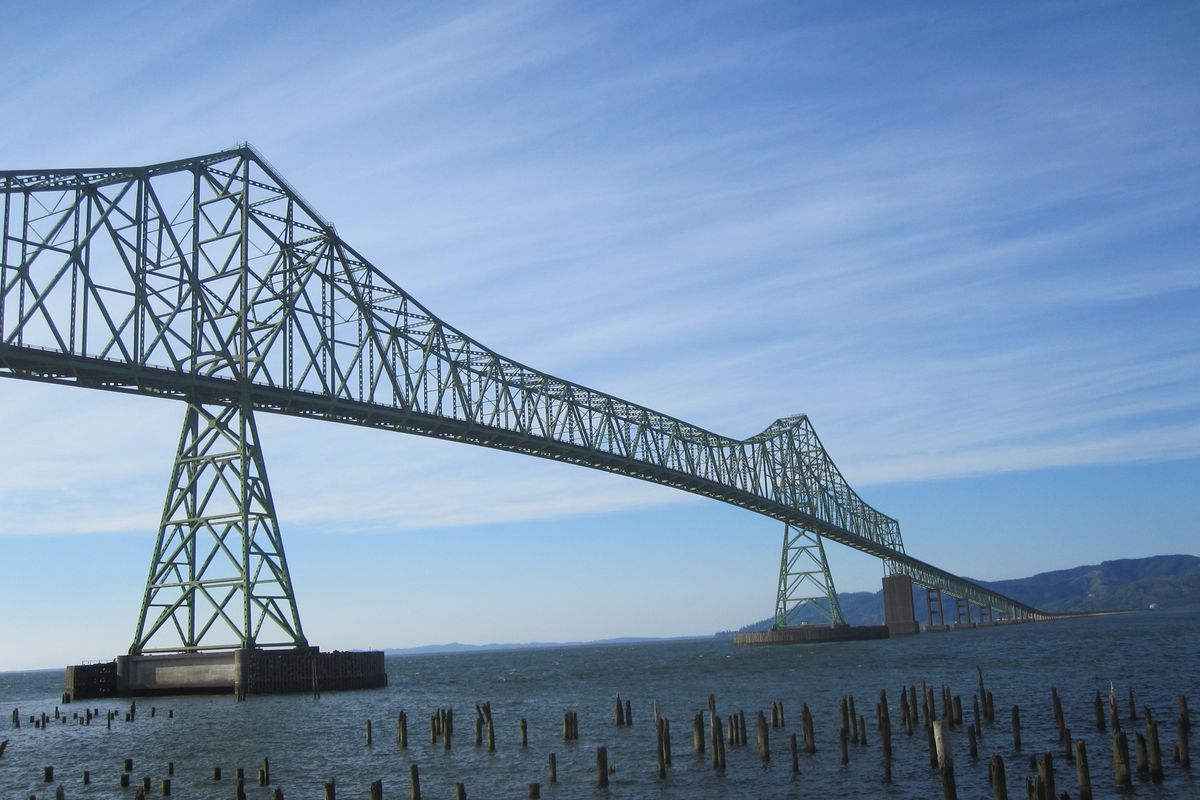Past, present, future on display along Astoria waterfront

Along the waterfront of Astoria, Ore., you can sense the drama of times past. The hundreds of pilings where salmon canneries used to stand give a clue to a city with a busy and turbulent history. But spend some time in this town and there comes an awareness that something else is stirring and evolving.
Graveyard of the Pacific
Just off from downtown Astoria and downriver, the huge Columbia River carries water drained from rivers of three states and Canada into the Pacific Ocean. The resulting collision of water creates tremendous waves, unpredictable currents and shifting sand bars as the river slows and drops much of its sediment. Crossing the bar is terrifying and dangerous during winter storms. Since 1792, at least 2,000 ships have sunk in the area. Even now with high-tech navigation equipment and trained guides, at least one ship a year goes down at the mouth of the Columbia.
Astoria had found itself in an economic recession, mainly because of the loss of its natural resources, especially timber and fish. There was high unemployment with businesses boarded up. But today the town is re-creating itself, the streets are busy with tourists wandering and exploring the town. They are enjoying new restaurants (as well as a few established ones) and lodging.
The Cannery Pier Hotel stands among the pilings where an original former cannery stood. The developer copied the look of the old Union Fish Cannery, using the same building materials, shape and red exterior. One bonus of staying there: All the balconies face the river and the bridge that connects Oregon to Washington. The section of the bridge cargo ships pass under is on the same side of the river as the hotel. The ships pass almost right in front of your face, and they’re huge – as much as 900 feet long and seven stories high.
The new Bridgewater Bistro, with a similar old cannery architecture, is 100 yards from the hotel, also with spectacular river views.
Several must-see sites help visitors explore the town’s history, including the Columbia River Maritime Museum; the Astoria Column; Fort Clatsop, where Lewis and Clark spent a winter; and Fort Stevens State Park, where the remains of a ship wreck is still on the beach.
Astoria’s history, present day attractions, restaurants, bistros and lodging make the sum of each part greater at the end of the day. Take the time to explore this town.
Founding a city
The mouth of the Columbia was a resource area long before Europeans discovered it.
Four groups of Native Americans, collectively known as the Chinooks, lived comfortably with abundant food, including berries, venison, salmon, whales, mussels and oysters. Animals like sea otters provided warm clothing in the cool, wet climate.
Early European explorers bartered with the Chinooks for the sea otter pelts. They were on their way to Asia and found that they could sell the furs at a premium price. The explorers noted that some of the Chinook had pot bellies from living well off the abundant food resources. Capt. Robert Gray was the first to venture into the mouth of the massive river and trade with the Native Americans. The lucrative Northwest fur trading had begun.
The town’s namesake, John Jacob Astor, sent two groups of pioneers to establish a fur trading community at the mouth of the Columbia River. One group traveled overland along the Oregon Trail and another by sea around South America. In 1811, Astoria became the first permanent U.S. settlement on the West Coast.
Exploitation
The natural resources in the area of Astoria were truly amazing. By the 1820s, 500,000 sea otter pelts had been shipped out. An otter pelt in perfect condition could be sold in London for as much as $2,000. Even today, sea otter populations haven’t recovered from the over-harvesting along the entire coastline.
The salmon runs up the Columbia and its tributaries are legendary. Initially, the catch was muted because the fish would spoil while being transported to distant markets. But the invention of the canning process changed that and Columbia River salmon became known throughout the world. In 1873, 43 million pounds of salmon were taken out of the Columbia River.
Overfishing and dams took their toll, and almost 100 years later, only 1.2 million a year were taken. Bumble Bee Seafoods’ cannery lasted in Astoria until the 1960s but eventually closed.